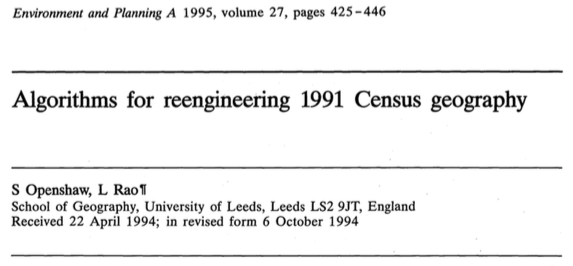Geographic Data Science
Regionalization
Unsupervised Spatial Machine Learning
Aggregating basic spatial units (areas) into larger units (regions)
Regionalization
Split a dataset into groups of observations that are similar within the group and dissimilar between groups, based on a series of attributes…
…with the additional constraint observations need to be spatial neighbors
Regionalization
- All the methods aggregate geographical areas into a predefined number of regions, while optimizing a particular aggregation criterion;
- The areas within a region must be geographically connected (the spatial contiguity constraint);
- The number of regions must be smaller than or equal to the number of areas;
- Each area must be assigned to one and only one region;
- Each region must contain at least one area.
Regionalization
- All the methods aggregate geographical areas into a predefined number of regions, while optimizing a particular aggregation criterion;
- The areas within a region must be geographically connected (the spatial contiguity constraint);
- The number of regions must be smaller than or equal to the number of areas;
- Each area must be assigned to one and only one region;
- Each region must contain at least one area.
Algorithms
- Automated Zoning Procedure (AZP)
- Arisel
- Max-P
- …
See Duque et al. (2007) for an excellent, though advanced, overview
Examples
Census geographies


A course on Geographic Data Science by Dani Arribas-Bel is licensed under a Creative Commons Attribution-ShareAlike 4.0 International License.